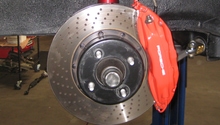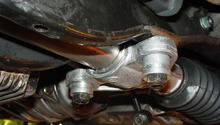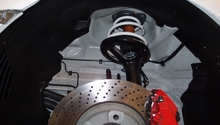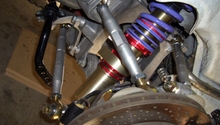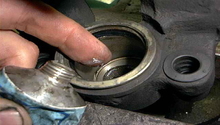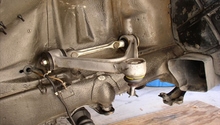Porsche: How to Replace Your Wheel Hub Bearing
Is it time to replace the wheel hub bearing on your Porsche? This article will guide you on how to successfully complete the job, and will give you tips as well as tricks to get it done with minimal effort.
This article applies to the Porsche 928, Porsche 993, and Porsche 997 (1978-2012).
One of the more common parts that requires replacement on Porsches (with higher mileage) are wheel hub bearings. Most that attempt to do the job themselves become very frustrated because removing everything can be a giant pain. This is a job that can be made a lot easier if you spring for a special tool or two, saving you a lot of time and frustration. Keep reading as this article will show you the easiest way to replace those stubborn bearings.

Materials Needed
- Bearing tool
- Torque wrench (rated for at least 339 ft-lbs)
- Breaker bar or impact wrench
- Socket wrench
- 8mm, 16mm, and 32mm sockets
- Jack and jack stands
- 2 or 3 arm pullers
- High temp grease
Step 1 – Remove wheel and brakes
Begin by jacking the car up, and then placing it on jack stands at all four wheels. Remove the wheel where the bearing you wish to replace resides. Set the parking brake. Use the 32mm socket and breaker bar or an impact wrench to remove the nut holding your calipers in place. Remove the brakes from the caliper, and unbolt the caliper by removing the two 16mm bolts holding it in place. Hang the caliper out of the way, being extra careful not to strain the brake line. Release the parking brake, and remove the rotors.
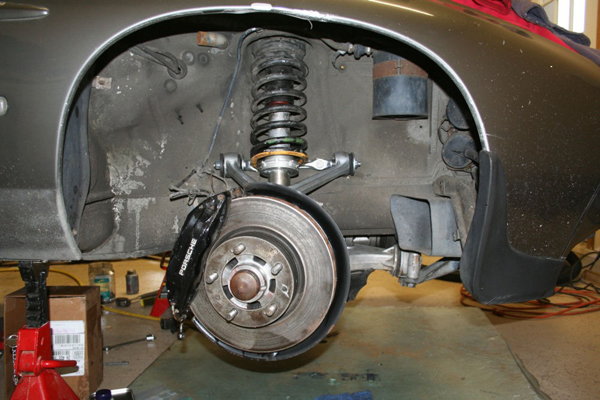
Related Articles
- Porsche 928: How to Jack Up Your Porsche - Rennlist.com
- Porsche 993: How to Jack Up Your Porsche - Rennlist.com
- Porsche 997: How to Jack Up Your Porsche - Rennlist.com
Step 2 – Remove hub and axle
Jack up the suspension at the housing, so that the axle is parallel to the ground. Center the puller on the axle shaft, and then pop the hub off. To remove the bearing press, you can take it to a shop that has a hydraulic press or you can do it yourself. Remove the axle by removing the six 8mm bolts on the CV joint, and pulling it out. Remove the four bolts on the housing that hold the two bearing race retainers.

Pro Tip
If you place the hub in the freezer while you work, it will make it easier to install it into the new bearing.
Step 3 – Replace old bearing
Use a bearing tool to remove the old bearing. Apply a light coat of high temp grease to the new bearing, and use the bearing tool to install. Re-install the bearing race retainers and the four screws that hold them in place. Install the hub, and let it warm up to room temperature if you placed it in the freezer. Re-install the axle, taking care not to push the hub out of the bearing. Replace the six 8mm bolts on the CV joint.

Step 4 – Re-install brakes and torque
Replace the rotor, and set the parking brake. Re-install the 32mm nut, and then torque to 39 ft-lbs. Re-install the brake caliper, torque to 85 ft-lbs, and then install the brake pads. Re-install the wheel, and repeat the steps if you need to replace another wheel bearing. If not, take the car off the jack stands and you're good to go!

Related Discussions
- Removing Rear Wheel Bearing - Rennlist.com
- Wheel Bearing DIY - Rennlist.com
- What Does It Take To Replace Your Wheel Bearings - Rennlist.com

